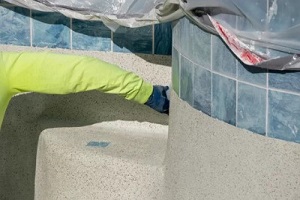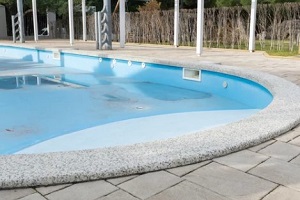 A swimming pool is a great addition to any home, providing a refreshing, fun way to beat the heat during the heat of the summer. However, as time goes by, a pool can become outdated, damaged, or even pose safety risks. When faced with this situation, it is important to decide whether to invest in a complete pool removal, replacement or restoration.
A swimming pool is a great addition to any home, providing a refreshing, fun way to beat the heat during the heat of the summer. However, as time goes by, a pool can become outdated, damaged, or even pose safety risks. When faced with this situation, it is important to decide whether to invest in a complete pool removal, replacement or restoration.
This guide will help with that decision, by outlining some of the signs that indicate the need for a pool restoration or a pool removal, as well as the benefits and deciding factors for both. If you are still unsure, contact a reputable pool company to thoroughly review your pool system.
Signs You Need A Pool Restoration
Some signs of wear are visible and others are an accumulation of issues over time. If your pool has the following visible and functional faults, it may be time to consider remodeling your pool to its former glory:
- Structural Damage – Cracks in the pool structure, damaged walls or floors, or any other signs of structural damage including water loss from leaks.
- Cracked Tiles or Plaster – Over time, the pool’s tiles and plaster can crack or become worn, leading to leaks or unsightly appearance.
- Outdated or Inefficient Pool Equipment – Older pool equipment may not function effectively, leading to increased energy bills and maintenance costs.
- Unappealing Aesthetics – If your pool is functioning normally but the appearance is outdated, faded, or simply unappealing, a restoration can improve the overall look and feel of the pool.
Pool Restoration Benefits
Restoring your inground swimming pool offers numerous benefits that enhance its functionality, safety, aesthetics, and property value. During the restoration process, you can update your pool with modern features and equipment, improving its overall functionality and efficiency. This includes installing energy-efficient pumps, advanced filtration systems, and automated controls, enhancing your swimming experience.
Safety is a top priority in pool restoration. Structural damage and safety concerns can be identified and rectified, ensuring a secure environment for swimmers. By addressing these issues and updating safety features including fencing, covers, and alarms, you can enjoy your pool with peace of mind.
 Aesthetically, a pool restoration breathes new life into your swimming pool. Faded colors, worn-out materials, and outdated design elements can be refreshed and revitalized. Resurfacing the pool, upgrading tiles and coping, and adding features like waterfalls or lighting transform your pool into a visually stunning oasis.
Aesthetically, a pool restoration breathes new life into your swimming pool. Faded colors, worn-out materials, and outdated design elements can be refreshed and revitalized. Resurfacing the pool, upgrading tiles and coping, and adding features like waterfalls or lighting transform your pool into a visually stunning oasis.
Furthermore, pool restoration adds value to your property. A well-maintained and attractive pool is an appealing feature for potential homebuyers, increasing the desirability and resale value of your property.
Signs You Need a Pool Removal
A complete pool removal may be more ideal for your home if you encounter the following factors:
- High Maintenance and Repair Costs – If the pool is constantly in need of repairs and maintenance, and is negatively impacting your budget, it may be more cost-effective to completely remove it.
- Lack of Use – If the pool is rarely used or no longer serves its purpose, removal may be the best option.
- Safety Concerns – If the pool poses a safety risk, such as extensive damage or a faulty system, such as electrical or drainage issues, it may be time to consider removal.
- Limited Space – If your yard space is limited, removing the pool can free up space for other uses such as garden, firepit or play area for children.
Pool Restorations Vs. Pool Removal
When comparing pool restorations and pool removal, it’s important to consider various factors that can influence your decision.
One of the most considered aspects is the cost involved. Pool restorations typically require an investment in materials, labor, and equipment to update and repair the pool. On the other hand, pool removal can also incur expenses for demolition, excavation and landscaping to restore the area. It’s important to weigh the upfront costs of restoration against the long-term savings in maintenance and repairs or the immediate costs of pool removal.
Another significant consideration is your future plan for the property. If you envision using the pool as a source of enjoyment, relaxation and entertainment, a restoration may be the ideal choice. Restoring the pool allows you to retain the benefits of pool ownership while improving its functionality and aesthetics.
However, if you have no intention of using the pool and prefer to utilize the space for other purposes, such as expanding your yard or creating new outdoor living areas, pool removal may be the more suitable option.
Personal preferences play an important role as well. Some individuals have a deep attachment to their pool and find great satisfaction in maintaining and utilizing it. For them, a restoration allows them to preserve the pool’s sentimental value while enhancing its features. However, if you have no emotional attachment to the pool or simply prefer not to deal with the responsibilities of pool ownership, removal might be a preferred choice.
 Local regulations governing pool ownership and removal should be considered. Some areas have specific regulations and permitting requirements for pool restoration or removal. Consult your local authorities to ensure you comply with all necessary guidelines and procedures.
Local regulations governing pool ownership and removal should be considered. Some areas have specific regulations and permitting requirements for pool restoration or removal. Consult your local authorities to ensure you comply with all necessary guidelines and procedures.
Reach Out to the Pool Restoration Professionals
If you are unsure whether to restore or remove your pool, it is best to consult with Masten Pools, the Northern Virginia, Maryland and Delaware pool restoration professionals. We can help you evaluate your options and make the best decision for your needs and budget while also ensuring the job is done safely and effectively. Contact Masten Pools to get started today by scheduling a free consultation.
